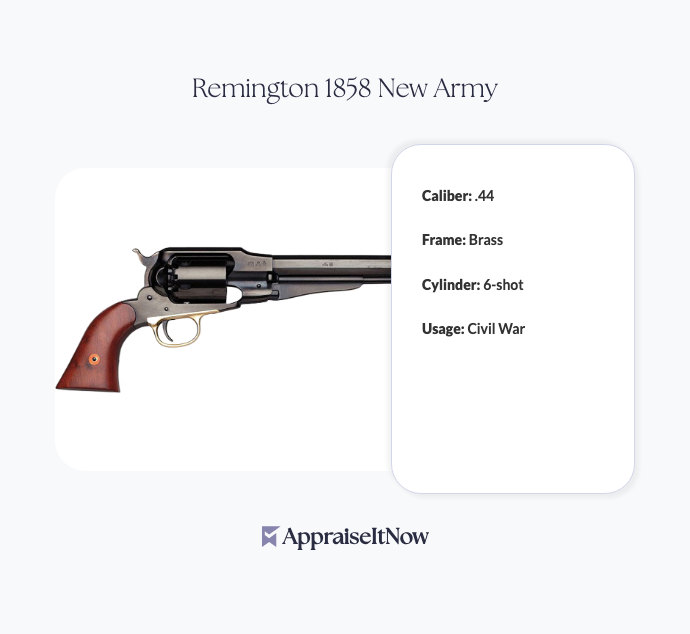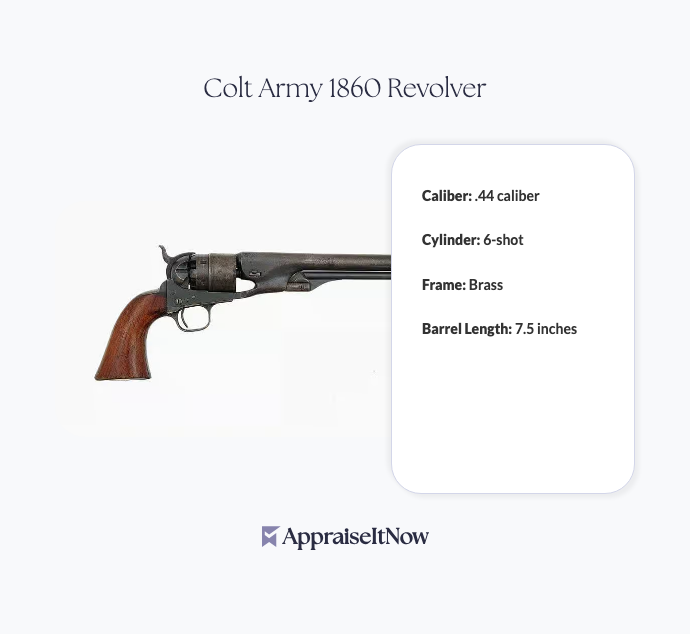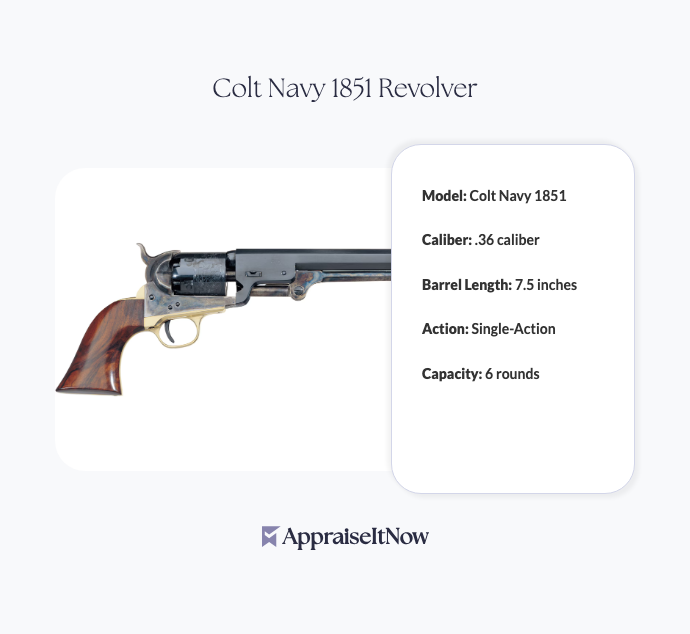<h1>How to Get Your Winchester Model 1886 Rifle Appraised</h1>
<p>If you own a Winchester Model 1886 Rifle—whether inherited, recently discovered, or you're considering a purchase—getting a professional appraisal is essential for understanding its true market value. Current market estimates for these classic lever-action rifles range from <strong>$3,000 to $6,000</strong>, though individual specimens can vary significantly based on condition, caliber, and provenance. Here's what you need to know about properly valuing this iconic American firearm.</p>
<h2>Understanding Winchester Model 1886 Market Value</h2>
<p>The Winchester Model 1886 occupies a unique position in firearms history and collecting circles. Introduced in 1886 and manufactured through the early 1900s, this lever-action rifle became legendary for its robust construction, smooth action, and exceptional accuracy. Your rifle's value depends heavily on which of the original caliber variants you own—the rifle was produced in .33 WCF, .38-56 WCF, and .45-70 Government, each commanding different prices based on collector demand and ammunition availability.</p>
<div class="callout tip"><p><strong>Collector's Note</strong></p>
<p>Winchester Model 1886 rifles with documented military or Wild West provenance can command 30-50% premiums over standard examples, making thorough research invaluable.</p></div>
<h2>Key Factors That Determine Your Winchester Model 1886's Worth</h2>
<p>When appraising your rifle, several interconnected factors directly affect its market value. Understanding these elements helps you prepare comprehensive documentation for a professional appraiser and ensures you're comparing similar pieces when researching comparable sales.</p>
<p><strong>Condition stands as the primary value driver.</strong> A Winchester Model 1886 in excellent condition with bright bore, sharp rifling, and original factory finish commands top-dollar prices. Moderately worn examples showing honest use still hold strong value, while heavily worn or refinished specimens typically fall toward the lower end of the valuation spectrum. Unlike firearms known for jamming or design flaws, the Winchester 1886's legendary reliability means mechanical functionality remains consistent across condition grades.</p>
<p><strong>Originality matters tremendously.</strong> All original parts with matching serial numbers significantly increase value compared to rifles with replacements or modifications. Original wood stocks, unaltered barrels, and period-correct hardware all contribute to higher appraisals. When assessing originality, professional appraisers examine subtle details like factory markings, finish consistency, and wear patterns that amateur evaluators might overlook.</p>
<p><strong>Rarity and production history influence collector demand.</strong> How many Winchester 1886 rifles were made? The rifle saw substantial production throughout its manufacturing run, making it more accessible than some contemporary designs. However, specific production years, caliber combinations, or special order features can significantly impact value. Your appraiser will reference production records to identify whether your rifle represents a common variant or a scarcer configuration.</p>
<h2>Caliber Considerations and Market Demand</h2>
<p>The caliber of your Winchester Model 1886 directly affects both its value and the collector base interested in acquiring it. The .45-70 Government chambering represents the most sought-after variant, particularly among hunters and historical enthusiasts who appreciate its substantial power and extensive modern ammunition availability. The .33 WCF and .38-56 WCF versions, while authentic period pieces, sometimes attract more specialized collectors due to limited modern ammunition options—a factor that either enhances value for purists seeking original configurations or reduces demand among shooters seeking functional rifles.</p>
<p>This nuance explains why two Winchester 1886 rifles with identical condition and originality might appraise at different values depending on caliber. Professional appraisers understand these market dynamics and factor them into comprehensive valuations, ensuring your rifle is positioned appropriately within the broader $3,000-$6,000 market range.</p>
<h2>Assessing Condition and Originality</h2>
<p>When preparing your Winchester Model 1886 for professional appraisal, understanding how condition grades affect value helps set realistic expectations. Appraisers typically evaluate several specific areas to establish overall condition ratings.</p>
<p>The barrel's internal condition matters significantly. A bright bore with sharp, defined rifling suggests light use and increases value substantially. Moderate pitting or frosting doesn't necessarily disqualify a rifle from strong pricing, but significant barrel wear or obsolescence does impact market appeal. Your appraiser will use specialized inspection tools to document barrel condition in detail.</p>
<p>Stock condition reveals the rifle's handling history. Original, uncracked wood with natural patina appeals to discerning collectors, while repairs, cracks, or refinishing may reduce value. The wooden components' integrity affects both aesthetics and functionality—a severely compromised stock suggests either age-related deterioration or rough historical use, either of which factors into appraisal calculations.</p>
<p>Mechanical function and action smoothness demonstrate the rifle's engineering quality. The Winchester 1886's smooth lever action remains one of its most celebrated features. A rifle cycling smoothly without binding commands premium pricing, while one requiring adjustment or showing wear patterns typically appraised lower. Your appraiser will test the action's functionality and note any required maintenance.</p>
<div class="callout note"><p><strong>Appraisal Insight</strong></p>
<p>Documentation of any repairs, refinishing, or modifications should be disclosed to your appraiser—transparency ensures accurate valuation and prevents disputes later.</p></div>
<h2>Why Professional Appraisal Matters for Winchester Firearms</h2>
<p>You might wonder whether professional appraisal is necessary for a rifle valued in the $3,000-$6,000 range. The answer depends entirely on your intentions. If you're simply curious about approximate value, online research provides rough estimates. However, if you're buying, selling, estate planning, or securing insurance coverage, professional appraisal becomes essential.</p>
<p>Insurance companies require certified appraisals for coverage amounts exceeding typical homeowner's policy limits. A professional appraiser provides documented evidence of your Winchester 1886's condition, authenticity, and market value—documentation that stands up to insurance claims and legal scrutiny. When <a href="/blog/a-beginner-s-guide-to-antique-gun-appraisals">appraising antique guns</a> and military collectibles, this documentation becomes especially important for establishing proof of value.</p>
<p>Similarly, if you're selling through auction houses, private dealers, or direct to collectors, a professional appraisal establishes baseline asking prices and helps negotiations by providing third-party validation. Estate executors managing Winchester firearms collections benefit from professional valuations for tax purposes and fair distribution among heirs. Real estate professionals sometimes discover Winchester rifles during property assessments and require expert valuations for inclusion in asset inventories.</p>
<h2>Avoiding Common Appraisal Mistakes</h2>
<p>Many Winchester Model 1886 owners damage their rifles' value through well-intentioned but misguided "restoration" efforts. Over-polishing metal surfaces, refinishing original stocks, or modifying actions to improve smoothness might enhance shootability but significantly reduces collector value. Original patina—even heavy patina—commands premium pricing among serious collectors who view authentic wear as documentation of historical use.</p>
<p>Cleaning with harsh materials, using incorrect lubricants, or attempting amateur repairs can permanently damage value. Before undertaking any work, consult a firearms expert about preservation versus restoration. The difference is crucial: preservation maintains original condition and authenticity, while restoration typically reduces collector appeal and market value.</p>
<p>Another common mistake involves assuming all Winchester 1886 rifles are worth identical amounts. Production variations, caliber differences, and condition fluctuations create substantial pricing differences within the model line. Comparing your rifle only to the highest-priced examples found online creates inflated expectations, while using lowest-priced comps understates value. Professional appraisers reference recent comparable sales and market data to establish realistic, defensible valuations.</p>
<h2>Age Determination and Serial Numbers</h2>
<p>Many owners ask whether serial numbers reveal rifle age, allowing them to determine production dates before professional appraisal. Winchester maintained production records that appraisers can reference, though serial number interpretation requires expertise. The Winchester 1886's manufacturing spans decades, with serial number ranges sometimes overlapping multiple years due to production scheduling and record-keeping practices of the era.</p>
<p>Your appraiser will use Winchester serial number databases combined with design features, stamping patterns, and production variations to establish approximate manufacture dates. This documentation becomes valuable historical context for your appraisal report, helping potential buyers or insurance companies understand your rifle's timeline and authenticity.</p>
<h2>Comparable Sales Analysis and Market Research</h2>
<p>Understanding recent comparable sales helps contextualize your Winchester Model 1886's likely appraisal value. Auction house results provide publicly documented sales data, revealing what collectors actually paid for similar rifles in recent months. Gun shows, antique dealers, and online marketplaces offer additional pricing data, though private sales typically remain undocumented.</p>
<p>When researching comparables, focus on rifles matching your specimen's caliber, condition, originality, and provenance. A .45-70 Government in excellent original condition isn't comparable to a .33 WCF with replacement stock and refinished barrel—yet many amateur valuers treat all Winchester 1886s as equivalent. This is why <a href="/blog/5-tips-for-getting-the-most-accurate-antique-gun-appraisal">professional appraisers specializing in antique guns</a> provide significantly more reliable valuations than online research alone.</p>
<h2>The Role of Provenance and Documentation</h2>
<p>If your Winchester Model 1886 came from notable ownership, participated in significant historical events, or was featured in film or publication, this provenance substantially impacts value. Documentation of such history—photographs, letters, receipts, or contemporary records—provides evidence supporting premium pricing within the standard $3,000-$6,000 range.</p>
<p>Conversely, rifles with suspicious provenance, unclear ownership history, or questions about legality require particular attention during appraisal. Your appraiser will address any red flags and document findings professionally, ensuring your rifle's status is clearly established before sale or insurance coverage.</p>
<h2>Preparing for Your Professional Appraisal</h2>
<p>When you schedule an appraisal with a qualified <a href="/blog/how-to-choose-a-licensed-professional-to-perform-your-antique-gun-appraisal">antique gun specialist</a>, preparation ensures efficient, thorough evaluation. Gather all documentation—purchase receipts, inheritance papers, family history, or previous appraisals. Photograph your rifle from multiple angles, capturing serial numbers, markings, and overall condition. Clean exterior surfaces gently, but avoid any restoration work before the appraisal.</p>
<p>Allow your appraiser access to inspect the rifle thoroughly, including disassembly if needed. Answer questions honestly about use history, previous repairs, storage conditions, and any modifications. This transparency ensures your appraiser understands your rifle's complete history and can provide accurate, defensible valuations.</p>
<h2>Insurance and Legal Implications</h2>
<p>Winchester Model 1886 rifles typically qualify for specialized firearm insurance coverage that protects against theft, loss, or damage. Your professional appraisal becomes the foundation for establishing agreed-upon values with insurance carriers, ensuring your coverage accurately reflects current market conditions. <a href="/blog/4-unique-tips-to-help-determine-the-value-of-an-antique-gun">Understanding proper valuation</a> protects both your financial interests and legal obligations.</p>
<p>If your rifle becomes part of estate proceedings, probate court, or legal disputes, certified appraisal documentation provides evidence-based value determination that withstands professional scrutiny. This formal documentation carries significantly more weight than estimates or guesses when legal standards of proof apply.</p>
<h2>Connecting with Qualified Appraisers</h2>
<p>Finding a truly qualified appraiser requires attention to credentials. Look for appraisers holding certifications from recognized organizations like AAA (American Association of Appraisers), ISA (International Society of Appraisers), ASA (American Society of Appraisers), CAGA (Certified Appraisers Guild of America), or AMEA (American Military Equipment Appraisers). These credentials indicate formal training, ethics standards, and ongoing professional development.</p>
<p><strong>AppraiseItNow</strong> connects you with USPAP-compliant appraisers specializing in <a href="/types/ffande">firearms and equipment</a> valuation across the United States. Our platform allows you to submit photographs, descriptions, and documentation securely online, then receive certified appraisals from credentialed experts within your region. This streamlined process provides professional-quality valuations without requiring in-person visits when photographs sufficiently document your Winchester Model 1886's condition.</p>
<div class="callout tip"><p><strong>Appraisal Best Practice</strong></p>
<p>Request appraisers experienced specifically with Winchester lever-action rifles and familiar with contemporary market conditions. Specialized knowledge ensures accurate value determination and defensible documentation.</p></div>
<hr />
<div class="callout note"><p><strong>Key Takeaway</strong></p>
<p>Your Winchester Model 1886 Rifle represents a significant historical and financial asset deserving proper professional evaluation. Whether you're buying, selling, insuring, or managing an estate, a certified appraisal provides the accurate, documented valuation that protects your interests and ensures informed decision-making. The investment in professional appraisal typically pays for itself through improved sale prices, proper insurance coverage, and confidence in your rifle's true market value.</p></div>







.avif)







